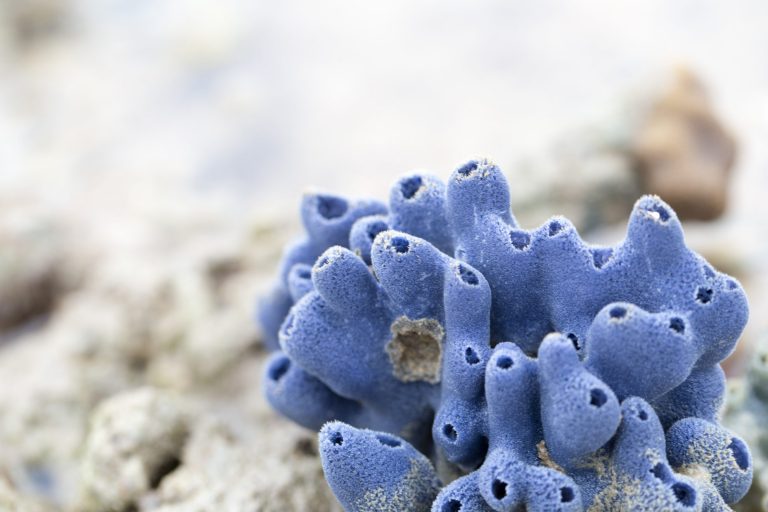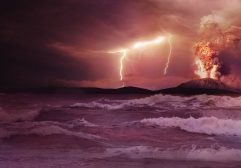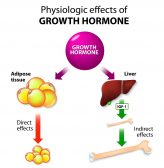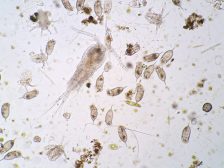Primitive Animals

The first animals were presumably sponge-like.
Table of Contents
Incorrect taxonomic classifications deemed organisms to be either animals or plants, in the Plantae or Animalia kingdoms respectively.
This would prove to be incorrect, as there were some organisms that would fit into either/or categories, making the old taxonomic classification unclear.
However, within the Cambrian Era, eukaryote Animalian organisms were thought to be roaming the seas, after further diversifying by natural selection and mutation from the first multi-cellular organisms mentioned in the previous tutorial.
These organisms would have arrived on the planet via evolution around half a billion years ago, gently diversifying over time from their ancestors into new distinct species occupying their unique ecological habitat.
In the grand scheme of things, life was diversifying at an accelerating rate, and thus taxonomists use more precise classifications over the geological periods. The arrival of distinct multi-cellular organisms has led us to distinguish them into Phyla.
An interesting fact to note is that the mineral composition of modern animals, such as ourselves, is similar to that of these ancient organisms that originated in the sea. Thus, we can deduce that as animals, and life in general, evolved from the sea.
This period of time gave rise to a multitude of genetic diversity in their respective phylum (the sub-taxon of kingdoms) described below.
Worms
Worms were some of the first diversifying animals to be found on Earth. Their flattened nature would have helped them in their movement against currents in the aquatic environment.
Remember that movement was a major asset to organisms at this time, thus, this was of great selective advantage in the long run. Since worms have been around since more or less the beginning of time as far as life is concerned, their genome has been adaptable enough to suit many ecological niches and environments, so much in fact that many species of worm are parasitic in nature. Below, the Phylum Taxon classification looks at worm species more closely, each divided into their unique Phylum:
- Phylum Platyhelminthes – Flattened, worm-like animals
- Phylum Nematoda – Roundworms
- Phylum Annelida – Segmented worms
Molluscs
Molluscs, such as snails, slugs, and mussels, are distinguishable from other animals because of classic characteristics such as the advent of feet, a tongue, an exoskeleton and/or gills. This classification of organisms would either have one or all of these characteristics.
Obviously, as molluscs possessed unique characteristics, and thus selective advantages in themselves. The use of feet, for example, meant that the seafloor could be combed more closely and efficiently while movement would have been easier with the ability of their feet to claw their way across the ocean and sea floors.
Coelenterates
Although these organisms are ancient in nature, they form the largest single living structure on planet Earth today, the Great Barrier Reef off the coast of Australia. These animals evolved developing many offensive characteristics, thus given a Taxon of their own. Examples are jellyfishes, corals, and sea anemones.
Typical characteristics of coelenterates include but not exclusively
- Tentacles that are capable of stinging potential danger and also their prey by using neurotoxins
- Jelly-like appearance
- An alteration of generations. Sometimes these species produce asexually one generation and sexually the next (perhaps suggesting the transition of sex, natural selection favoring one way or the other over time)
Echinoderms
Just like all other organisms developing in the Cambrian era, the echinoderms were of a simple nature. One interesting characteristic was their five-part symmetry, noting that the number five is a common number involving projecting areas of the body (i.e. fingers and toes).
‘Starfish’ is an example of this classification of organisms. It has stood the test of time via the Cambrian Era to today’s world half a billion years later. Some people have suggested due to their characteristics that they may be a common ancestor of many all those years ago, but due to the timescales involved, yet again there is inconclusive evidence.
The 5-star structure of the starfish allows them to prize open clams, sometimes in tandem as a means of nutrition.
These are all examples of the continues evolution of life. These animals were the beginning of many, continuing to diversify in their pursuit of survival. With competition came co-operation, the fight for the right to survive was hotting up, and organisms continued to advance in a sophisticated manner.
You will also like...

Origins of Life on Earth
Earth was created around 4.5 billion years ago and life began not long after. Primitive life likely possessed the elemen..

Abiotic Factors – Water Conditions
A still body of water may be disturbed by a variety of factors. One of them is wind. In fact, it is considered as the pr..

Animal Growth Hormones
Hormones are produced in the endocrine glands of animals. The pituitary gland and hypothalamus are the most impor..

New Zealand’s Unique Geographical History
Explore why New Zealand has such unique flora and fauna, and learn why long periods of geographical isolation. This less..

Freshwater Communities & Plankton
Planktons are microscopic organisms that live suspended in aquatic habitats. There are two groups: the phytoplanktons an..

Biological Cell Defense
Organisms employ different strategies to boost its defenses against antigens. Humans have an immune system to combat pat..
